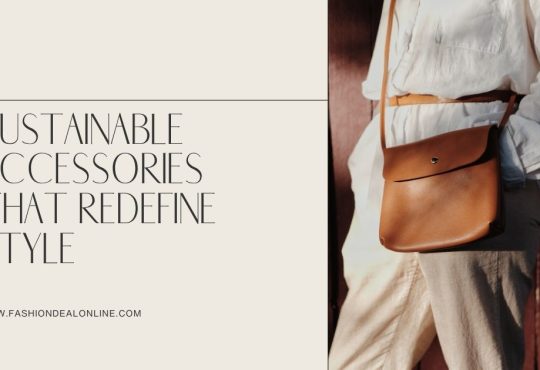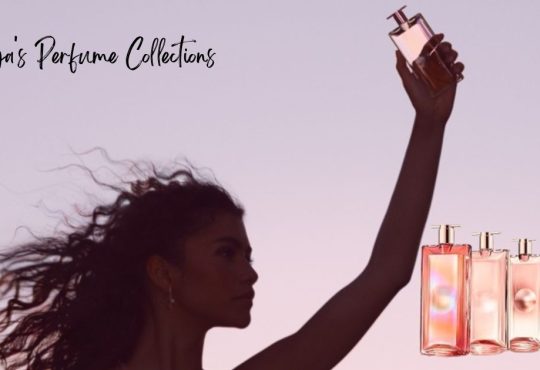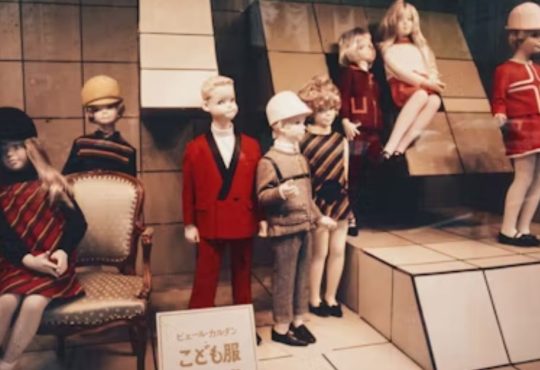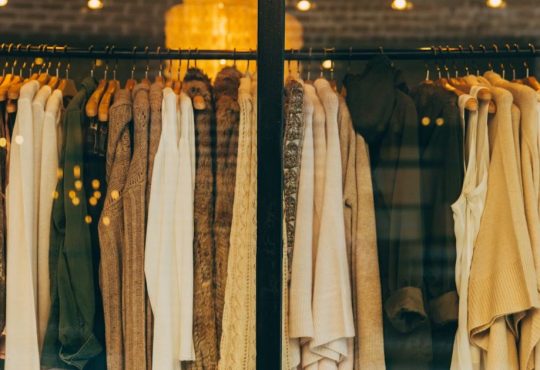In the ever-evolving fashion world, trends come and go with the seasons. However, some styling strategies stand the test of time, and among them, monochromatic dressing remains a true pillar of effortless sophistication. Wearing a single-color outfit from head to toe may sound simple, but its impact is anything but. When executed well, monochromatic dressing elevates your fashion sense by creating a cohesive, polished, and undeniably striking look that transcends fleeting trends.
At its core, monochromatic dressing is about unity. You immediately craft an intentional outfit by sticking to one color family — classic black, soft camel, daring red, or serene pastels. There is a visual continuity that naturally elongates the body, making you appear taller and leaner without relying on complex styling tricks. Even better, it removes the daily guesswork of coordinating clashing pieces, allowing you to focus on silhouettes, textures, and accessories that complete the look.
How to Master Monochromatic Outfits
Monochromatic outfits are a timeless, chic way to elevate your wardrobe, but mastering this style requires more than simply matching a single color from head to toe. While monochrome dressing offers an effortless look, creating a standout ensemble involves subtle details and an understanding of proportions, textures, and accessories. To help you elevate your monochromatic look, here are key techniques to master this style effectively.
1. Play with Different Textures
Combining various textures is a simple yet effective way to bring depth and visual intrigue to a monochromatic look. Wearing multiple materials in the same color palette adds layers and dimension to the look, preventing it from feeling flat or one-dimensional.
For instance, team a smooth satin blouse with a cozy, chunky wool sweater or mix a luxurious velvet blazer with crisp, tailored cotton trousers. The contrast between the shiny satin and the matte wool or velvet creates a dynamic effect that keeps the eye engaged while still adhering to the color scheme.
Textures also influence the overall feel of the outfit. For example, pair a muted gray leather jacket with a soft cashmere sweater and denim jeans in a similar hue, allowing each piece to stand out while maintaining a harmonious monochromatic look. This technique works particularly well in cooler weather, where layering different textures adds warmth and style.
2. Vary the Shades Slightly
The monochromatic dressing doesn’t require you to wear identical shades of the same color—in fact, varying the tones slightly can create a more sophisticated, layered look. Instead of sticking to one exact hue, experiment with mixing complementary shades within the same color family to add subtle contrasts and depth.
For instance, combining powder blue with cobalt or navy with indigo allows the outfit to maintain a unified aesthetic without feeling too uniform. Similarly, you could pair deep chocolate brown with lighter tan or pale blush with deeper rose tones. These subtle differences in shade add depth and energy to the outfit, keeping it visually engaging while staying true to the monochromatic style.
This technique can also be used to experiment with seasonal colors. Lighter, pastel shades in spring and summer can easily transition into deeper tones in fall and winter, allowing you to update your monochromatic looks as the seasons change. By varying shades within a color family, you can better play with proportions and highlight different body parts, such as pairing a darker shade at the bottom (like trousers) with a lighter shade at the top (like a sweater or blouse).
3. Incorporate Statement Accessories
When dressing monochromatically, accessories can be your best friend. A well-placed accessory adds a layer of personality and character to your outfit without disrupting the color flow. Think of accessories as punctuation marks in your style story — they add structure and emphasis to the outfit.
Statement pieces, like bold jewelry, sculptural belts, and standout shoes, can make a monochrome outfit pop without overwhelming it. For instance, gold jewelry looks stunning when paired with all-black or all-white outfits, providing just the right amount of contrast. A sleek, sculptural belt in a bold design can break up the silhouette and create a focal point, especially when paired with a long dress or an oversized shirt.
Shoes are another great way to add flair to your monochromatic look. A bright red pump, a metallic sneaker, or artfully designed boots can elevate an outfit and give it a more fashion-forward edge. Statement accessories are a great way to add personality to a simple, monochromatic outfit.
4. Focus on Fit and Tailoring
The key to pulling off a flawless monochromatic outfit is ensuring that the fit and tailoring of each piece are impeccable. When working with a single color, every detail of your outfit stands out more, and a poor fit can easily disrupt the clean, cohesive look you’re trying to achieve.
Focus on how each piece contours to your body for the perfect fit. A beautifully tailored blazer in a deep green will look far more sophisticated than a baggy one, even if the color is perfect. Similarly, trousers with a proper hem and a well-fitted shirt will always look more polished than pieces that are too loose or ill-proportioned.
Monochromatic outfits often rely on clean lines and sleek silhouettes, so each piece must complement the others in terms of fit and style. You can experiment with different styles—a tailored trench coat paired with a more relaxed knit sweater or a body-skimming dress with an oversized jacket—but the overall look should remain balanced.
5. Layer with Purpose
Layering is another powerful tool in monochromatic dressing. Layers provide visual depth and functional warmth, but when layering monochromatic outfits, each layer should feel purposeful and contribute to the overall color scheme.
For example, a turtleneck in the same color as your suit can be layered under a jacket for a streamlined look that adds texture and warmth. You can also experiment with oversized layers, such as a long coat or duster, over a more fitted base outfit to create a striking contrast in proportions while maintaining consistent color.
When layering, consider how the different pieces interact. A lightweight scarf in the same color family can add softness and texture to a monochromatic look without breaking the visual flow. Mix contrasting fabrics, like a plush suede jacket over a velvet dress, to add intrigue. Ensure that each piece complements the others, enhancing the cohesive color story rather than detracting from it.
6. Add Monochrome Patterns for Extra Dimension
While monochromatic outfits are usually associated with solid colors, incorporating patterns within the same color family can add extra dimension and style. Subtle patterns, like stripes, polka dots, or animal prints, can elevate a monochromatic look while maintaining a streamlined appearance.
For instance, combining a simple black sweater with a black-and-white striped skirt offers a unified look while adding visual interest. Similarly, you could mix textures and patterns—like a wool houndstooth jacket with a plain wool skirt in the same color—for added depth without breaking the monochromatic vibe.
That being said, it’s essential not to overdo it with patterns. Opt for one or two patterned pieces and keep the rest of your outfit in solid colors within the same palette. This ensures a polished and harmonious look.
Color Inspirations for Monochromatic Looks
Specific colors naturally lend themselves to stunning monochromatic outfits. Here’s a quick inspiration board:
- Black: Always sleek, always safe — black-on-black is the ultimate in classic minimalism.
- White and Cream: Perfect for spring and summer, an all-white outfit exudes a light, airy vibe and a sense of freshness.
- Earthy Neutrals: Shades of taupe, beige, and olive green offer a sophisticated, understated vibe perfect for professional settings.
- Bold Reds and Burgundies: Perfect for making a strong statement without feeling over the top.
- Soft Pastels: Monochromatic looks in blush pinks, pale lavenders, or sky blues can feel modern and romantic.
When and Where to Wear Monochromatic Outfits
The beauty of monochromatic dressing is its versatility. A tailored pantsuit in a single hue communicates authority and sophistication for formal occasions. An all-denim outfit or matching lounge set for casual weekends feels relaxed yet intentionally styled. Even in professional settings, a monochrome outfit in a neutral tone signals confidence and professionalism without the stiffness of a traditional business suit.
Street style icons and runway designers frequently turn to monochromatic dressing to create memorable looks that resonate with fashion insiders and everyday trendsetters. Whether attending a business meeting, a brunch, or a night out, a monochromatic outfit can adapt seamlessly, proving its unmatched power to elevate any fashion moment.
The Psychological Edge of Monochrome
Interestingly, color psychology suggests that dressing in a single color can influence how others perceive you and how you feel. Wearing all black, for instance, can project strength and elegance, while wearing all blue might evoke calmness and trustworthiness. By curating your color choice based on the mood you want to set, you subtly wield your outfit as a tool for self-expression and social interaction.
The Power of Monochromatic Style
Monochromatic dressing is far more than a minimalist fashion trick; it’s a refined, dynamic strategy that underscores the idea that less can be more. By mastering the art of wearing a single color, you project confidence, create sleek silhouettes, and highlight your style in a way that feels timeless and of the moment.
Ultimately, a monochromatic outfit isn’t just about what you wear — it’s about how you wear it. It’s an outward reflection of inner assurance, a quiet power move that proves true style doesn’t scream for attention; it simply commands it.





